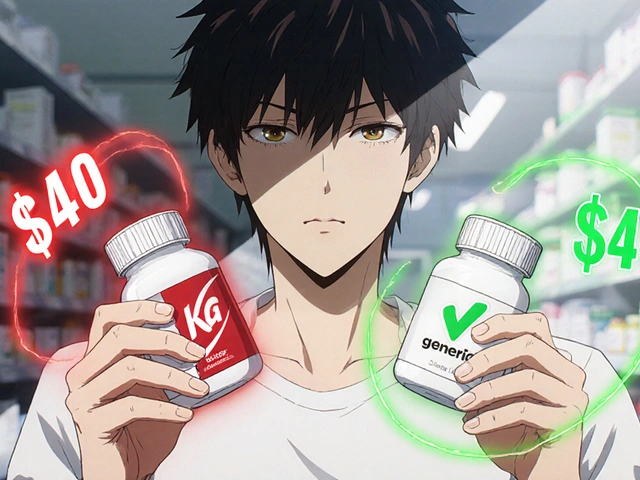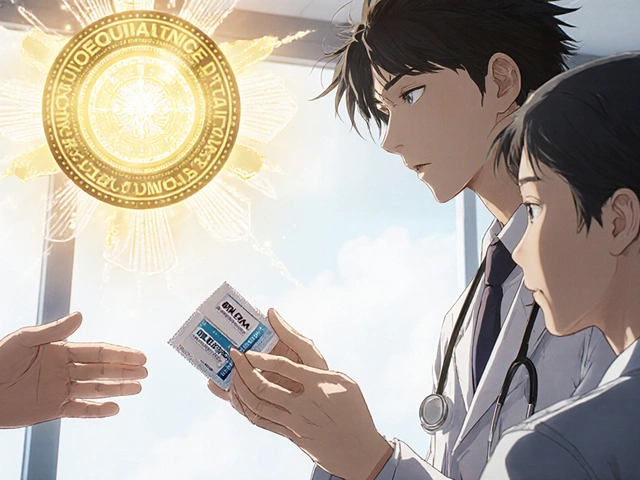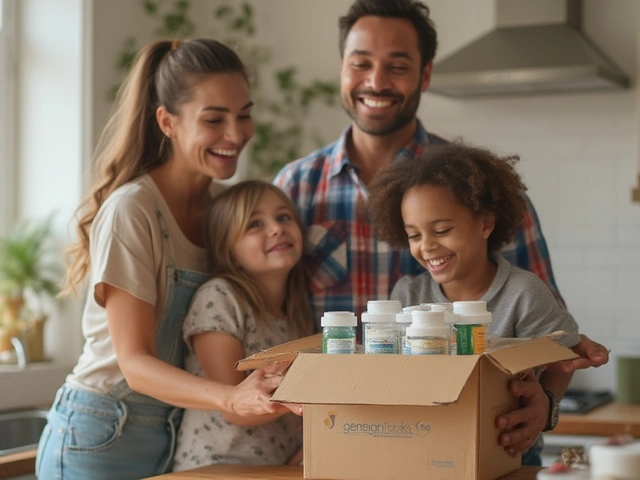For millions of Americans managing chronic conditions like high blood pressure, diabetes, or asthma, the real cost of medication isn’t just the price on the bottle-it’s what you pay over 10, 20, or 30 years. A $40 monthly pill might seem manageable until you realize that’s $480 a year, $14,400 over three decades. But switch to the generic version, and that same drug could cost just $4 a month. That’s $1,200 saved every year. Over a lifetime, that’s more than $36,000-money that could go toward rent, groceries, or emergency care instead of empty pill bottles.
Why Generics Are Just as Effective as Brand-Name Drugs
Many people assume generic drugs are cheaper because they’re weaker or made with lower-quality ingredients. That’s not true. The FDA requires every generic medication to have the same active ingredient, strength, dosage form, and route of administration as the brand-name version. They must also prove they work the same way in the body through bioequivalence testing. That means the generic version of lisinopril for high blood pressure delivers the same amount of medicine into your bloodstream as Prinivil-within a 90% confidence interval of 80% to 125% of the brand’s performance. The difference? Price, not power.How Much You Really Save Over Time
Let’s break it down with real numbers. If you’re taking metformin for type 2 diabetes, the brand-name Glucophage might cost $150 a month. The generic? Around $25. That’s $1,500 saved annually. For someone on multiple chronic medications-say, a statin for cholesterol, a beta-blocker for heart health, and a diuretic for fluid retention-the savings compound fast. A 65-year-old on three daily generics instead of brands could save over $5,000 a year. Over 20 years, that’s more than $100,000.These aren’t theoretical numbers. In 2020, generics made up 90% of all prescriptions filled in the U.S., but accounted for only 18% of total drug spending. That gap between volume and cost is where the real savings live. The USC Schaeffer Center estimates that in 2020 alone, generic and biosimilar drugs saved the U.S. healthcare system $338 billion. That’s not just corporate profit-it’s money staying in patients’ pockets and reducing strain on insurance systems.
Generics Improve Adherence-And That’s Where Real Health Savings Happen
Saving money isn’t just about the price tag. It’s about whether you actually take your meds. Studies show patients on generic drugs are 18-22% more likely to stick with their treatment plan than those on brand-name versions. Why? Because cost is the #1 reason people skip doses. A CDC study found 25% of rural patients admitted to skipping pills because they couldn’t afford them. When cost drops, adherence rises. And better adherence means fewer hospital visits, fewer ER trips, and fewer complications.Take hypertension. If you don’t take your blood pressure meds regularly, your risk of stroke or heart attack jumps. But patients on generic lisinopril are 20-30% less likely to be hospitalized for cardiovascular events than those who skip or delay doses due to cost. The same pattern holds for diabetes: consistent use of generic metformin reduces the risk of kidney failure, nerve damage, and vision loss. In Brazil, government efforts to push generic diabetes and hypertension drugs increased access by 35% and cut related healthcare costs by $1.2 billion in a single year.
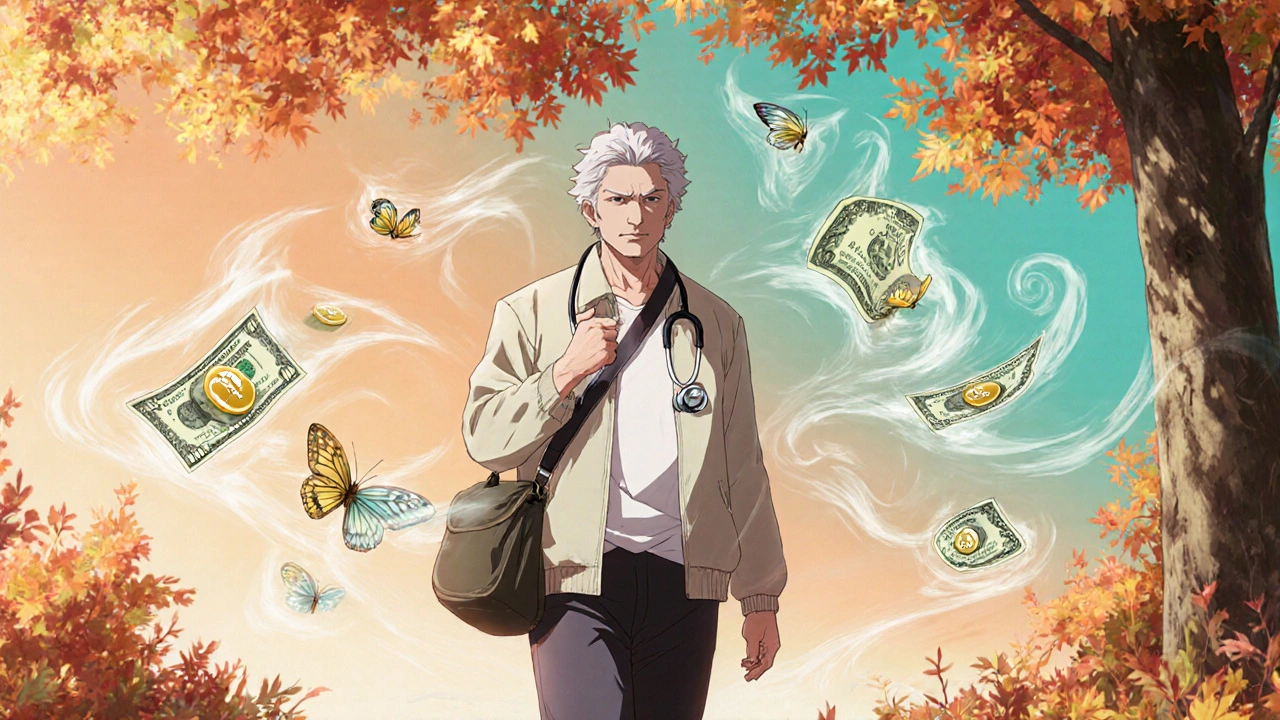
What’s Holding People Back?
Despite the clear benefits, many still hesitate. Some believe generics are “inferior” because they look different or come in a different pill shape. Others worry about inactive ingredients-fillers, dyes, or coatings-that might cause rare allergic reactions. But these don’t affect how the drug works. If you’ve had a reaction to a brand-name drug, your pharmacist can check if the generic uses the same inactive ingredients.Another barrier? Insurance. Some plans still require prior authorization for generics, or don’t cover them at all if they’re not on the formulary. That’s changing. The 2022 Inflation Reduction Act capped insulin costs at $35 a month for Medicare patients-and many of those are generics. More plans are now automatically substituting generics unless the doctor specifically writes “dispense as written.”
How to Maximize Your Savings
Start by asking your pharmacist: “Is there a generic version of this?” They’re trained to know every available alternative and can often switch you on the spot. If your doctor prescribes a brand-name drug, ask if a generic is appropriate. Most chronic condition meds have generics now-95% of hypertension prescriptions, 92% of diabetes meds, and 88% of asthma treatments are filled as generics.Sign up for Medication Therapy Management (MTM) if you’re on Medicare Part D. These free services connect you with a pharmacist who reviews all your meds, finds duplicates, spots interactions, and switches you to lower-cost generics. Patients in MTM programs report 25% higher satisfaction and 30% lower out-of-pocket costs.
Use the FDA’s Orange Book to check patent expirations and approved generics. If your drug is still under patent, you might be able to wait a few months for a generic to hit the market. Meanwhile, use manufacturer coupons or patient assistance programs-many big pharma companies offer discounts on brand-name drugs while generics are still rolling out.
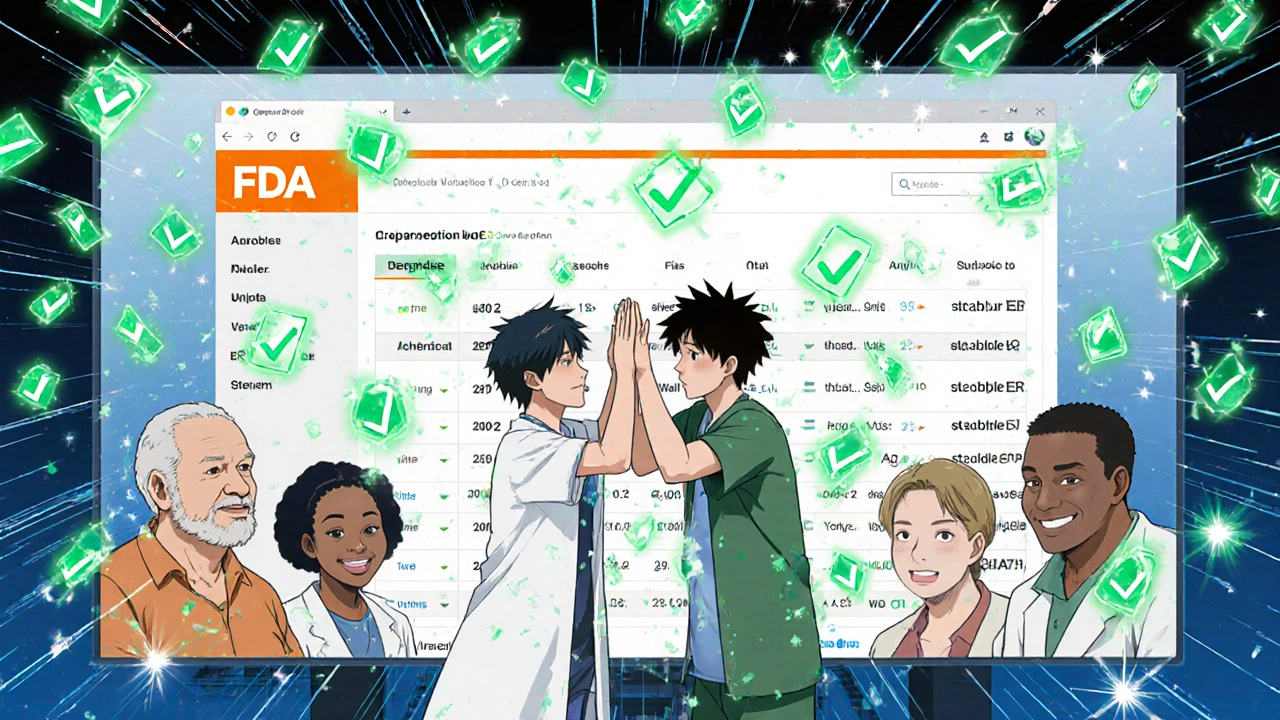
What’s Next for Generics?
The next wave of savings is coming from biosimilars-generic versions of complex biologic drugs used for conditions like rheumatoid arthritis, Crohn’s disease, and certain cancers. These used to cost over $10,000 a year. Now, biosimilars are cutting those costs by 15-35%. IQVIA predicts biosimilars could save the U.S. $300 billion over the next decade.The FDA’s Generic Drug User Fee Amendments (GDUFA) III, running through 2027, is speeding up approval for complex generics-meaning more affordable options will arrive faster. Between 2023 and 2027, around $150 billion in brand-name drug sales will lose patent protection. That’s a massive wave of savings coming your way.
Final Thought: It’s Not Just About Money
Choosing generics isn’t just a smart financial move-it’s a health decision. Lower cost means better adherence. Better adherence means fewer complications. Fewer complications mean more years lived without hospital stays, dialysis, or amputations. For someone managing a chronic condition, the right generic isn’t a compromise. It’s the best possible choice.Are generic drugs really as safe as brand-name drugs?
Yes. The FDA requires generic drugs to have the same active ingredient, strength, dosage, and bioequivalence as the brand-name version. They must pass the same strict manufacturing standards. Differences in color, shape, or inactive ingredients don’t affect safety or effectiveness for the vast majority of patients.
Why do some people say generics don’t work as well?
This is usually due to placebo effects or confusion over changes in pill appearance. Rarely, a patient may react to an inactive ingredient in a specific generic version. If you notice a change in how you feel after switching, talk to your pharmacist. They can check if the generic uses different fillers and may switch you to another version.
Can I switch from a brand-name drug to a generic without asking my doctor?
In most cases, yes. Pharmacists are legally allowed to substitute generics unless the prescription says “dispense as written.” Still, it’s a good idea to inform your doctor so they can monitor your response, especially if you’re on multiple medications or have complex health needs.
What if my insurance doesn’t cover the generic?
Ask your pharmacist to check if there’s a different generic version on your plan’s formulary. If not, request a formulary exception. Many insurers will approve it if you show the brand-name drug is too expensive. You can also use manufacturer coupons or patient assistance programs-some offer free or low-cost generics even without insurance.
How do I find out when a generic will be available for my drug?
Use the FDA’s Orange Book, which lists approved generic drugs and patent expiration dates. You can search by brand name or active ingredient. Many pharmacy websites also show estimated generic availability. If your drug is still under patent, ask your pharmacist to notify you when a generic becomes available.
Are there any chronic conditions where generics aren’t available?
Most common chronic conditions-like high blood pressure, diabetes, high cholesterol, asthma, and depression-have multiple generic options. For newer or complex biologic drugs (used for rheumatoid arthritis, psoriasis, or cancer), generics called biosimilars are just starting to become available. These are not exact copies but are proven to work the same way and cost significantly less.
Can I save money by buying generics in bulk?
Yes. Many pharmacies offer 90-day supplies at the same cost as a 30-day refill, often with lower copays. For chronic conditions, getting a 90-day supply of a generic can cut your monthly cost by 20-30% and reduce trips to the pharmacy. Ask your pharmacist about mail-order options or bulk discount programs.


